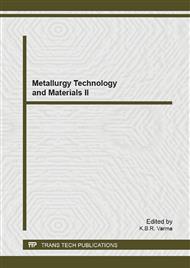p.153
p.157
p.161
p.165
p.171
p.175
p.179
p.188
p.192
Influence of Process Parameters on the Fluidity of High Pressure Die-Casting Al-Si Alloys
Abstract:
It is generally known that silicon influences the fluidity of aluminum alloys. There are several techniques to evaluate the fluidity of aluminum for gravity casting such as using spiral or serpentine type mold and vacuum suction test. However, fluidity of aluminum in high pressure die-casting has not been sufficiently studied. Therefore, in this study, the relationship between the fluidity and superheat of pouring aluminum alloy as well as injection speed was studied. A serpentine and step type die for evaluating the fluidity of aluminum alloys was designed and actual experiments were conducted for aluminum by varying many parameters such as pouring and injection speed and the content of silicon. The results showed that fluidity of aluminum in die-casting was quite similar to the gravity casting. Under high pressure die casting conditions, increased fluidity was measured as the silicon content, superheat, G.B.F treatment time and injection speed were increased.
Info:
Periodical:
Pages:
171-174
Citation:
Online since:
September 2013
Authors:
Keywords:
Price:
Сopyright:
© 2013 Trans Tech Publications Ltd. All Rights Reserved
Share:
Citation:


